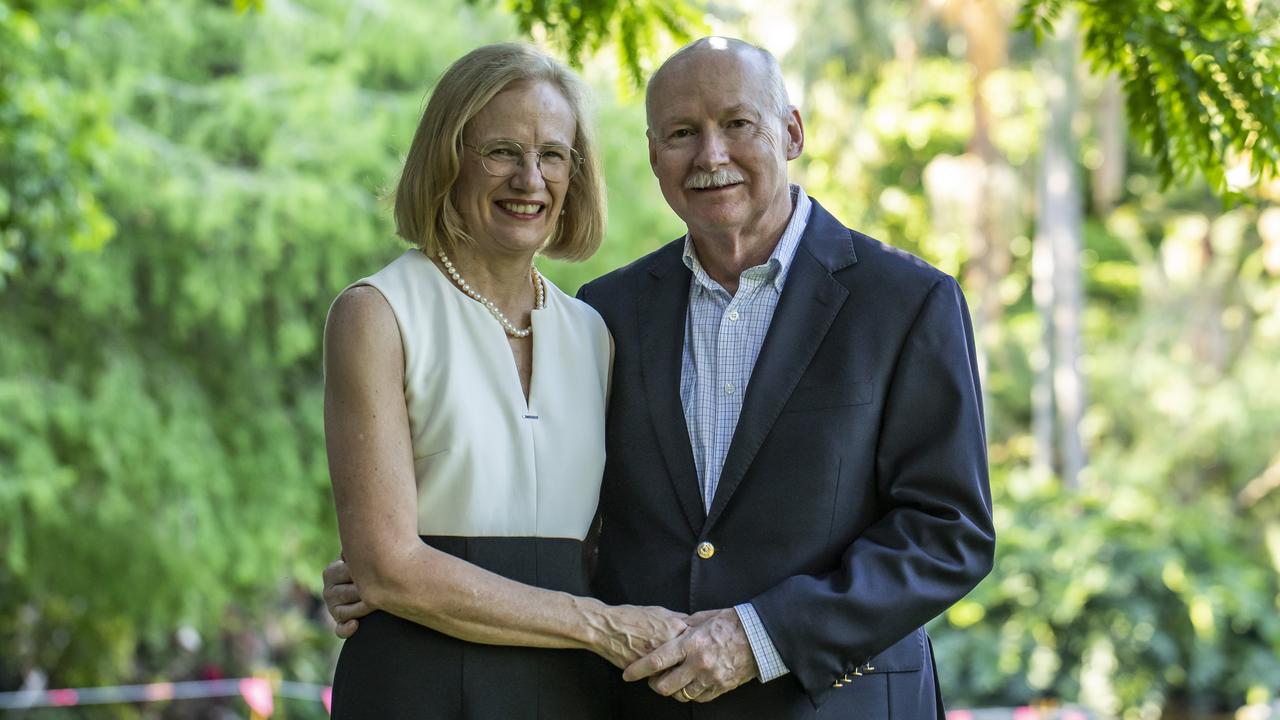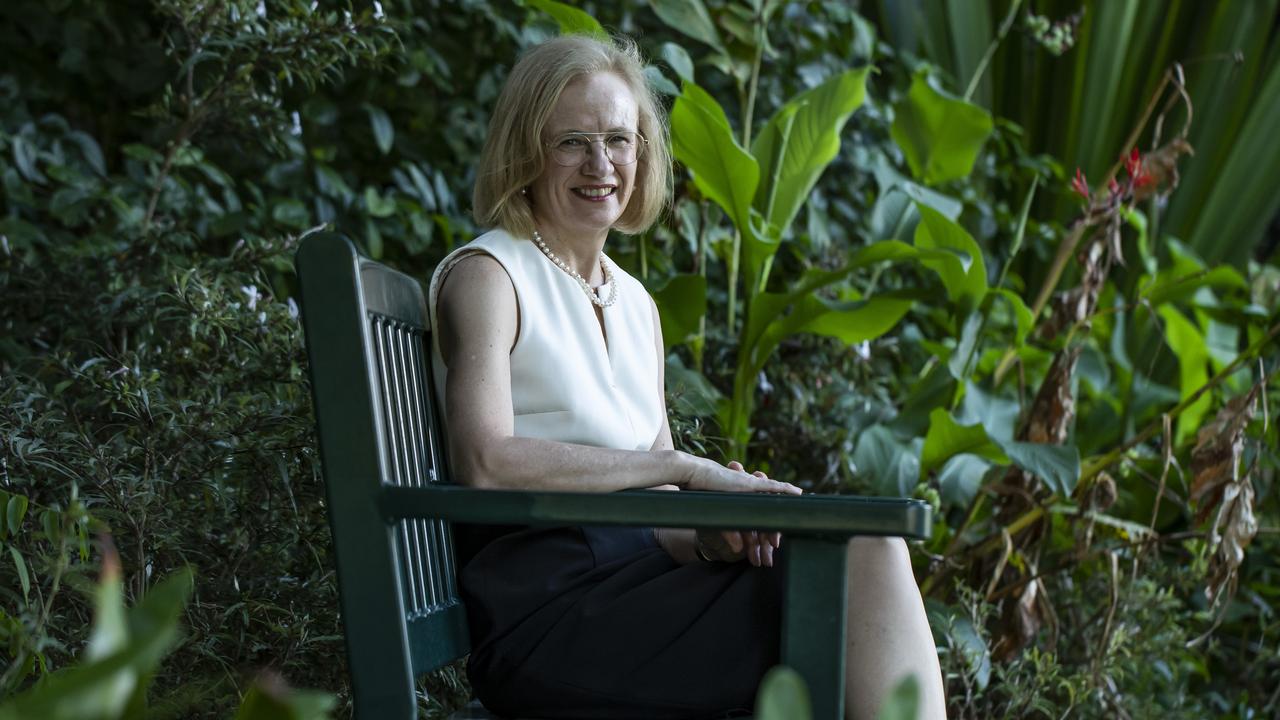‘Come home now’: Jeannette Young turned to husband as COVID ‘nightmare’ set in
As she got off the phone in January after a briefing on the emerging coronavirus, a teary Dr Jeannette Young’s first port of call was to reach out to this man.
QWeekend
Don't miss out on the headlines from QWeekend. Followed categories will be added to My News.
The woman who has led Queensland through the once-in-a-century pandemic has had a secret adviser during her biggest career challenge – her husband, a respected microbiologist.
In a revealing interview with Qweekend, the state’s Chief Health Officer Jeannette Young has told how her husband Graeme Nimmo has been the ideal sounding board during the health crisis, as well as having a “lovely meal” ready for her when she arrives home at night.
“He’s the perfect person to be married to when you’ve got a pandemic, or you’re a chief health officer who doesn’t know anything about pathology and infectious diseases,” Dr Young said. “It’s been a great team, purely by accident.”

Dr Nimmo, on pre-retirement long service leave, was the first person Dr Young called after she emerged in tears from a national hook-up of chief health officers on January 18 to discuss what was then a mysterious new coronavirus, spreading in China. He was enjoying a weekend away at Mooloolaba, on the Sunshine Coast.
“I rang him up and said: ‘Graeme, you’ve got to come home. Now. I can’t do this. I need you,” she told him.
That night, after Dr Nimmo returned to Brisbane, the pair discussed what would need to be done should a pandemic eventuate, as his wife feared.
“He’s always very, very wise,” she said.
It was Professor Nimmo who encouraged Dr Young to give the chief health officer role “a try” when she was first asked to act in the job in 2005.
“I initially said: ‘No’,” Dr Young said. “But when I went home and spoke to Graeme about it, he said: ‘Why not just give it a go?’ So I did.”
Fifteen years later, she’s Australia’s longest serving chief health officer and the woman many credit with keeping Queensland safe during the pandemic, through her swift actions.
“You can’t wax and wane because then no-one knows what you’re going to do next,” she said.
On January 21, Dr Young was the first chief health officer in Australia to raise concerns publicly about the “novel coronavirus”.

Four days later, when Australia’s first case of the virus was recorded in Melbourne, Young activated Queensland’s State Health Emergency Co-ordination Centre, or SHECC.
Queensland confirmed its first case of SARS-CoV-2, the virus that causes COVID-19, on January 28. The next day, Dr Young declared the virus a public health emergency – before any other Australian state and even before the World Health Organisation.
But the woman who has become Queensland’s face of the pandemic refuses to take credit for one of the most effective pandemic responses in the world.
“Seriously, I’m only one person,” she said.
“I’ve got this enormous team that is just brilliant. Each one of them is an expert in their own right. There’s so many of them, I can’t list them all. When brought together, they’re unbeatable.”
She said other government agencies, especially police, the Palaszczuk Government and everyday Queenslanders, who had “willingly and responsibly followed advice”, had also played critical roles.
After months of uncertainty, Dr Young is finally looking towards 2021 with excitement, hopeful about rolling out COVID vaccines from March.
“I’m standing up a team to just focus on rolling out vaccine,” she said. “We’ve already got all the preliminary work done about how to do it. That will give us the chance to go back to our lives.”
Asked about when life would begin to return to normality in Queensland, Dr Young said: “We’re pretty normal now.
“I don’t think we’ve got virus circulating in Queensland, which is why we can go to the football, we can live our lives.”
But she warned Queenslanders they would need to remain cautious for some time, particularly with the state’s domestic borders open to all Australians, bar those living in Adelaide.
“We can’t celebrate yet,” Dr Young said.
With COVID-19 unlikely to be eliminated, she continues to urge Queenslanders to avoid shaking hands and to get tested if they develop symptoms, then stay home until they are cleared of the virus, and are feeling well again.





